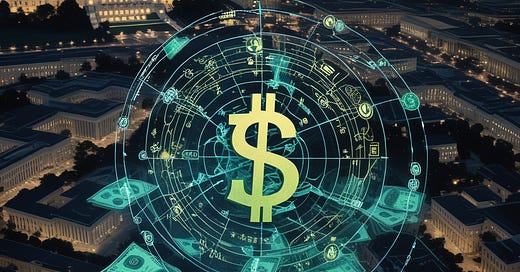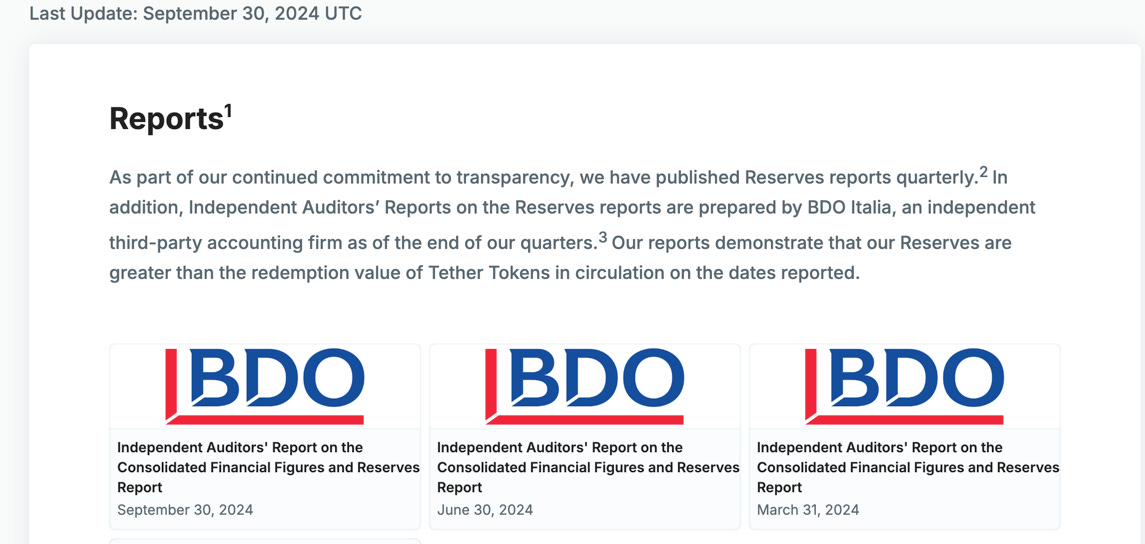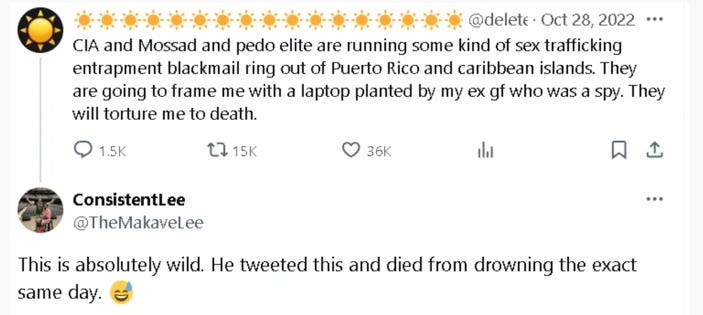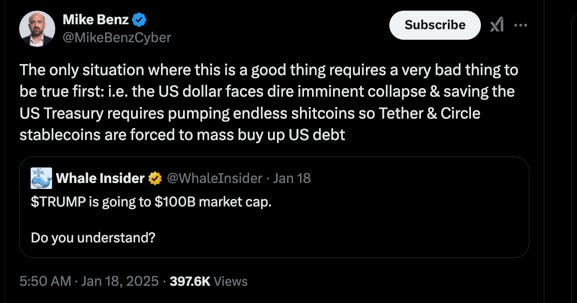What is a Stablecoin?
Stablecoins are crypto tokens “backed” 1:1 by the USD. The principal companies that issue them are Tether (USDT) and Circle (USDC). The idea is that each token is worth $1, and that the company minting the token is holding the equivalent value in USD, either cash or instruments such as US Treasuries. So far so good.
How are they used?
Both USDT and USDC provide liquidity for Bitcoin and other cryptocurrencies because they are traded against Bitcoin in BTC/USDT or BTC/USDC pairs. This allows traders to move easily between Bitcoin and a so-called stable currency (in this case the USD) without having to convert to underlying fiat currency. This can reduce the cost of trading in cryptocurrencies significantly given the high cost of operating in the complex and layered fiat monetary system.
USDT has a very high market capitalisation (typically in the billions of dollars) and provides significant depth to Bitcoin markets. High liquidity means larger trades can happen with minimal price slippage, which is crucial for institutional traders and large-scale transactions.
Source: coinmarketcap.com
Auditing Collateral
Stablecoins such as Tether have run into controversy, due to the lack of transparency around the collateral they hold.
For many years, Tether was not audited and traders were going on trust that the company held the collateral it alleged it had.
Tether has undergone attestations and limited reviews from firms like Moore Cayman, but it has not undergone a full audit by one of the top global accounting firms. The company has faced significant criticism and scrutiny due to the lack of a complete audit and concerns over the actual backing of USDT tokens. While Tether claims to be fully backed and has improved transparency in recent years, the debate continues over whether its reserves are genuinely robust and reliable enough to ensure 1:1 backing at all times.
Source: https://tether.to/en/transparency/?tab=reports
Bitcoin’s Price and Stablecoins
Bitcoin’s price is driven by scarcity (the 21m issuance cap) and the halving cycle every four years, which reduces the amount of bitcoin by half that miners are rewarded for winning a block. It’s price is also drive by market demand.
While not directly linked to stablecoins, Bitcoin’s price is effected by them due to the liquidity stablecoins provide, making it easier to trade in and out of bitcoin.
Moreover, stablecoins are used in many developing countries where people using the bitcoin network to send or receive funds, prefer to convert their holdings into stablecoins post-trade in order to hold exposure to the USD, rather than Bitcoin, as the latter’s price tends to be more volatile. You can listen to Alex Gladstein of the Human Rights Foundation talk about the importance of stablecoins to developing economies HERE.
Tether’s Dark Past
Tether was founded by Disney child star Brock Pierce and co-founders Marc Collins-Rector, who was convicted of child sexual abuse in 2004, and Chad Shackley, who along with Collins-Rector and Pierce was arrested in Spain in a mansion filled with child pornography in 2002.
Former State Department cyber expert Mike Benz has suggested that Tether might serve as a mechanism enabling the U.S. government to bolster the USD and effectively print money without relying on the traditional process of issuing debt through the Federal Reserve and obtaining congressional approval for expenditures. The mechanism would operate as follows:
Tether creates USDT stablecoin tokens, which then require collateralisation with USD cash or other instruments such as treasuries.
Tether then purchases these instruments from the Federal Reserve.
This allows the U.S. administration to prop up the rapidly imploding USD, and prevent the fiat monetary system from collapsing, while at the same time potentially providing dark-money to other intel initiatives.
Mark Goodwin, journalist for The Unlimited Hangout, had this to say about Brock Pierce in a recent article:
”the former Disney star Pierce reeks of a private-sector, blackmailed agent of the currency speculator stalwarts that have run the public sector in the shadows. Pierce tellingly commented that “if the government were knocking off people in this field, I would know,” upon the drowning of stablecoin developer Nikolai Mushegian just days after Mushegian stated that the CIA, the Mossad, and the “pedo elite” were going to kill him.”
The Threat to the USD as the World’s Reserve Currency
The BRICS countries (Brazil, Russia, India, China, and South Africa) have been making moves that could potentially challenge the dominance of the U.S. Dollar (USD) as the world’s primary reserve currency. While the USD has held its position as the global reserve currency since the end of World War II, recent developments within BRICS suggest that these nations are increasingly seeking to diversify away from the dollar and reduce their dependence on it.
In recent years, BRICS members have been discussing the idea of creating a new BRICS currency or a basket of currencies to challenge the USD's dominance. China and Russia, in particular, have pushed for alternatives to the dollar-based financial system. This includes potentially using a BRICS-specific currency or even gold-backed currencies.
Russia has been particularly motivated to move away from the U.S. Dollar due to its increasing geopolitical tensions with the West, especially following its annexation of Crimea in 2014 and more recently the Western sanctions following Russia’s incursion into Ukraine that targeted Russia’s access to the global financial system, including its access to the SWIFT network (which facilitates international payments in USD).
The Trump Administration, Tether and Howard Lutnick
Here is where Trump and the incoming U.S. administration comes into the picture.
Howard Lutnick, CEO of the interdealer brokerage Cantor Fitzgerald, was appointed to co-chair Donald Trump’s transition team and to serve as U.S. Secretary of Commerce in the incoming administration. Cantor Fitzgerald is not only a shareholder in the cryptocurrency company Tether, but also acts as a custodian for Tether’s USD collateral.
If speculation regarding Tether’s involvement in funnelling "dark money" to U.S. intelligence agencies and supporting the U.S. dollar amidst increasing challenges from alternative reserve currencies, such as those proposed by the BRICS nations proves accurate, then Lutnick would be uniquely positioned to help safeguard USD dominance through Tether’s influence.
This could, in part, explain why the incoming U.S. administration, in stark contrast to the outgoing Biden administration, has shown significant support for cryptocurrencies.
President Trump has advocated for the establishment of a Bitcoin Strategic Reserve, which could function as a "sink" for U.S. dollar debt. Additionally, he has promoted the use of stablecoins as a mechanism to ensure a surveillable dollar system and reinforce a reliable, ongoing market for U.S. debt.
ICYMI Trump recently issued a “Trump Coin”, about which Mike Benz had this to say:
Now What?
Bitcoin and stablecoins can coexist in parallel, and as Mike Benz aptly highlighted in his piece "Bullish on Bullshit," one could leverage to one’s advantage the U.S. administration’s efforts to inflate Bitcoin’s price as a means to bolster the fiat dollar system.
That said, it is crucial to remain vigilant about the underlying claims and closely monitor the trajectory of these developments. Governments view the decentralised nature of the Bitcoin network as a significant threat and are eager to promote competing systems that are more easily surveilled. As such, it is wise to approach alternative mechanisms, such as stablecoins, with a healthy degree of skepticism. Minimise your reliance on these technologies wherever possible to avoid unintended exposure to their inherent risks.
📚Further Reading
The Unlimited Hangout have an excellent series of articles on this topic under The Chain
See The Unlimited Hangout’s breakdown of Trump’s strategy HERE
Watch a discussion between Mike Benz and Preston Pysh at last year’s Bitcoin Conference in Nashville on the topic of institutional capture below:










